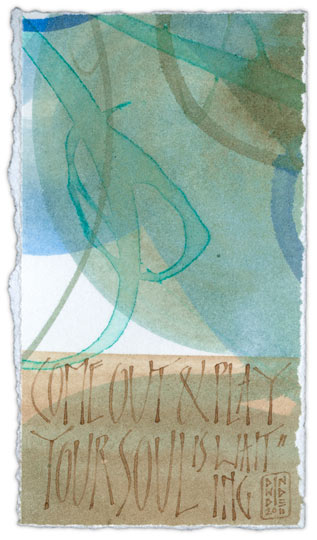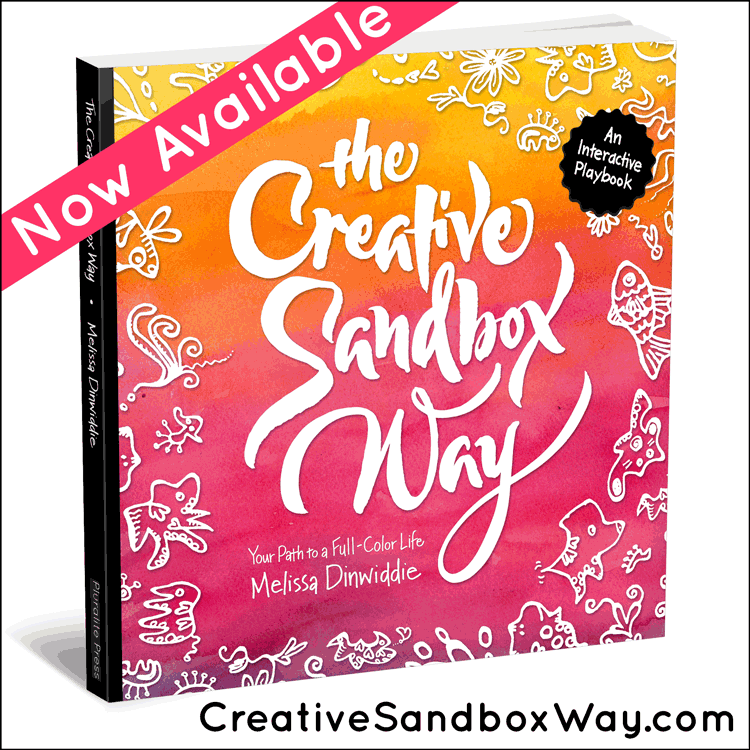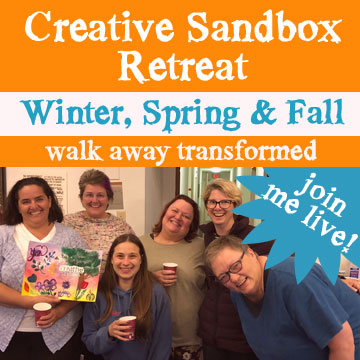 When I started dancing at age 16, I got immediate praise for being “talented,” “really good,” “a natural.”
When I started dancing at age 16, I got immediate praise for being “talented,” “really good,” “a natural.”
You may not be surprised to know that I kept at it — after all, with that kind of response, why wouldn’t I?
And yet now I realize that’s actually a very good question. In fact, after reading Carol Dweck’s book, Mindset, when I look back on my teen years I wonder what did keep me going in dance.
See, as Dweck discovered in her research, it turns out that praising kids (or adults!) for innate ability — talent, intelligence, whatever — can lead them to believe that their ability is only innate, and that no amount of effort will change that. With this kind of belief system — what Dweck calls the fixed mindset — a person is unlikely to push themselves to try anything that might fail at, because that would prove to the world that their so-called talent/intelligence/ability was fraudulent all along.
Praise for effort, on the other hand, leads people to want to work harder, to want to take risks, to delight in the process of learning, rather than fearing exposure that they don’t already know it all.
We may not even realize we’re doing it, but those of us who were praised for how smart or talented we were often end up paralyzed by the very praise that was intended to help push us forward.
That certainly happened to me in a big way with art as an adult (more on that later). What I’m interested in here, though, is why I didn’t get paralyzed by praise for my “innate dancing ability” when I was a teen.
I wanted desperately to believe in my innate talent — after all, how validating is that, to be told you’re special?! Yet I knew I wasn’t a “genius,” because I couldn’t make my body do everything I wanted it to right out of the gate. Some things came rather quickly, but a lot of things I had to work at, and work at, and work at, ad nauseum.
Back in the most intense period of my dancing life, I remember watching a spot on Evening Magazine, a local Bay Area TV show, that on this particular night featured a young boy who was dancing in a piece (perhaps The Nutcracker?) with the San Francisco Ballet. The then-Artistic Director, Michael Smuin, asked the boy — who couldn’t have been more than nine or ten, and had only just started dancing — if he thought he could jump straight up in the air, spin around two times, then land cleanly in fifth position. This fancy feat is known as a double tours en l’air, and is something dancers struggle for years to do well.
“I don’t know,” shrugged the boy, “I’ll try.”
He nailed it on the first try.
The same thing happened with every other ballet move Smuin asked the boy to try. It was as if he’d been dancing for more years than he’d been alive.
“Why is he so good?” the TV reporter asked Smuin.
Smuin was beside himself. He couldn’t believe the kid was real. “Why is he so good?” he repeated back, eyes glazed with excitement, “Because he’s a fucking genius, that’s why!” (Actually, they bleeped out the “fucking,” this being broadcast television, but it was obvious what he’d said.)
That TV spot cut me to the core. I knew I would never be as good as that kid, and it devastated me to accept this truth.
Somehow it didn’t occur to me that every other dancer in the San Francisco Ballet — and probably 99.9999999% of the most brilliant dancers that ever existed on the planet — got where they did through hard work. Very, very few of them were brilliant right out of the gate. Yes, they had some sort of facility (it’s hard to be a ballet dancer, for example, if you were born without legs), which might have gotten them started, but it was effort and persistence that got them to greatness.
That’s actually why Michael Smuin was so beside himself that he swore on national television — kids like this don’t come along very often.
And regardless of how “talented” my dance teachers told me I was, every move I made unveiled me as Not As Talented as the boy genius from Evening Magazine.
So what in the hell kept me at it???
Here’s what I think was going on:
1) The experience of dancing itself gave me a tremendous amount of joy, which I was (quite literally) viscerally aware of. Yes, it created frustration too, when I couldn’t do what I wanted as well as I wanted, but moving is just plain joyous.
And even more importantly:
2) Dance is done in community, and there is a culture of daily practice. In dance culture, it is understood that in order to be able to do what you want with your body, you have to show up every day. There is a cultural understanding that if you miss a day, you can tell, and if you miss more than one day, everyone else can tell. Plus everyone in the studio expects you to come to class every day, so dancers have mega-accountability working for them.
In other words, practice — showing up — is built into the art form.
I’ve talked a lot recently about the importance of community (it’s why I’ve created my Time to Glow program as a group experience, rather than as a download, or a book, or a series of autoresponders). I believe it is one of the three ingredients that foster profound mindset shifts. And I truly believe that the very fact that dance is done in community is what enabled me to keep forging ahead, when all that poisonous praise threatened to paralyze me.
Now let me tell you a story where praise really did paralyze me.
When I started doing calligraphy in my late 20s, I didn’t have that community accountability or culture of daily showing up. Typical of visual artists, I was working in isolation most of the time, except for the periodic weekend workshop or weekly class. Nobody but me knew if I didn’t show up.
This wasn’t an issue at first, when all I was doing was exploring, just feeding myself, just for me, playing in the Creative Sandbox.
I remember talking to some of my friends in the calligraphy world who were lamenting that they couldn’t seem to get themselves in their studios to make art.
Huh?
What did they mean, I wondered? The very idea did not compute to me. I couldn’t wait to get into my little “studio” (a desk and drafting table in the corner of the second bedroom).
How could anyone have trouble doing the thing they loved doing more than anything?? I would never have that problem (I thought).
How naive I was.
It didn’t take long for the Resistance Monsters to start appearing, and back then, I had no tools to deal with them. At. All.
Looking back, I think my big paralysis started shortly after I went to my first international calligraphy conference in 1996.
I arrived at the conference breathless with excitement. In the 18 months or so that I’d been playing with pens and ink I’d never been around so many fellow calligraphers at one time.
500+ people who got it, who understood my love of letter-art, lettering and all things letters!
Workshops all day long!
Exhibits (multiple!) of stunning calligraphic artworks!
Nightly lectures on topics calligraphic!
Stores set up for the duration of the week where I could finally pick up and hold in my hands the calligraphic tools, books and papers I had, until this point, only ever seen (and lusted after) in catalogs!
In short, I was in heaven. It’s truly a wonder I didn’t explode (and I remember literally jumping up and down in excitement more than once.)
Being the “do everything/check all possible options/never miss an opportunity” type, I had also signed up for optional 30-minute critique sessions with three of the “big name” faculty members. I brought my little portfolio, with the few commissioned pieces I’d made at that point, and laid myself bare, heart pounding, for their feedback.
If I hadn’t already been floating on air just to be there, I would have been floating after those sessions. I think they lifted my feet at least three more inches off the ground. All three teachers expressed astonishment at the level of my skill after only a year and a half since first picking up my pens. “A prodigy,” wrote one, in a card she gave me at the end of the week.
It was truly a dream come true.
After I came home, though, that dream sank quickly into a nightmare. Getting into my studio seemed to get harder and harder, and the exuberant Creative Sandbox explorations dried up and blew away.
Now I understand that the well-intentioned praise from those “big names” — praise which at the time seemed like the greatest gift in the world — had an unintentional poisonous edge to it. Without realizing it, I latched onto that praise and solidly plunked myself into a very fixed mindset, in which every piece I created had better be a masterpiece, otherwise I wouldn’t live up to my “prodigy” potential.
I could no longer play and experiment in the Creative Sandbox, because everything that came from my “talented” fingers had to be amazing! At least that’s how it felt to me.
Let me tell you, nothing could be more paralyzing.
It’s actually kind of amazing that I managed to create a business out of my calligraphic art, given the fixed mindset I was stuck in. (The secret: I only made art that was commissioned and directed by a client.) What’s not so surprising, though, is that I lost the joy in creating that I used to have. What’s especially sad is how long it took me to get it back.
(Silver lining: my stuckness around creating art got me into creating music, which has been and continues to be an enormous source of joy for me. But that’s another story.)
The good news is that I did get my joy back. And although I’m sad for the years I “lost,” I also see my decades of stuckness as an enormous blessing, because that is what has made me so passionate about helping others change their own mindsets and (re-) connect with the creative pursuits that bring them joy. If my own journey had been free of challenges, I don’t think this fire to change the world would burn so hot inside me.
So where does this leave us? What is the takeaway here?
Just this:
Imagine if, instead of saying things like “Wow — you’re a natural! A prodigy!” the “big name” calligraphers had said “Wow — you have obviously been working very hard in the past year and a half! Your effort is clear in the quality of your work — keep it up!”
It might have led to a very different outcome, no?
As a teacher myself, I know I’ve praised students as “naturals” in the past, and it makes me cringe to think about. I can’t go back and redo those moments, but I can correct forward, noticing where I jump to praising talent — both in others and in myself — and intentionally switch to praising effort.
You can do the same. With your kids, your friends, your students, yourself, remember it’s effort and persistence that lead to greatness. (And if you think about it, isn’t effort and persistence more worthy of praise and acknowledgment than simply being born with an ability??)
Everything worth doing is worth doing poorly in order to learn to do it well. Remember that. [Click to tweet this.]
Meanwhile, remember the community and culture of daily showing-up that is built into the dance world? If your creative thing is something that doesn’t have such a built-in culture and community, how might you go about creating it?
Just something to think about.

And speaking of community…
If you’d like to be part of a warm community where you’ll learn tools to get past Resistance and be recognized for your efforts and persistence (and where “talent” is irrelevant), join me in Time to Glow, a 4-month transformational journey for women who are ready to answer the call, tame the gremlins, and actually live the creative life of your dreams. Click here for details about the program, and to sign up. Registration ends Tuesday, May 22 at 9pm PDT, so secure your spot now!
PS — Pssst! Know someone who might benefit from seeing this today? Pass it on!





